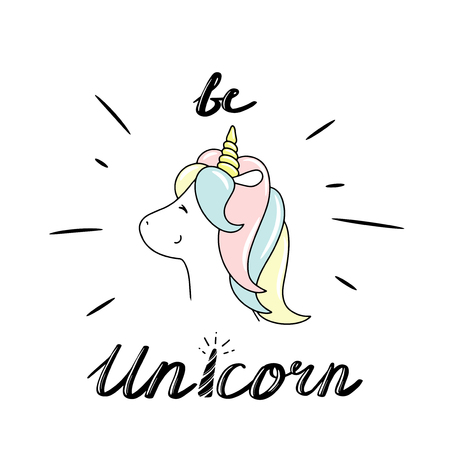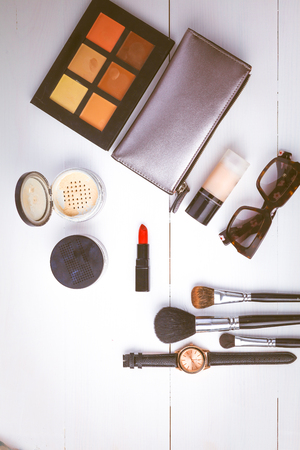1. What Does Cruelty-Free Actually Mean?
If you’ve ever browsed the beauty aisle or scrolled through your favorite makeup brands online, you’ve probably seen lots of products labeled as “cruelty-free.” But what does that really mean—and is it always what we think? Let’s break down the facts and clear up some common misunderstandings.
Understanding the Cruelty-Free Label
In simple terms, “cruelty-free” means that a product and its ingredients were not tested on animals at any point during production. However, there’s no single legal definition for this term in the United States, which can make things a little confusing for shoppers.
Common Misconceptions About Cruelty-Free Makeup
| Myth | Reality |
|---|---|
| All cruelty-free products are also vegan. | Nope! Cruelty-free just means no animal testing—vegan means no animal-derived ingredients. |
| If it says “not tested on animals,” it’s totally cruelty-free. | This phrase isn’t regulated and might only refer to the finished product, not the ingredients. |
| Cruelty-free means the company never tests on animals anywhere. | Some brands claim to be cruelty-free but sell in countries where animal testing is required by law. |
The Difference Between Cruelty-Free and Vegan Products
| Cruelty-Free | Vegan | |
|---|---|---|
| Animal Testing | No | Not necessarily (check for cruelty-free label too) |
| Animal Ingredients | Might still be present (like beeswax or carmine) | No animal-derived ingredients at all |
Quick Tip:
If you want to support both animal welfare and avoid animal byproducts, look for products labeled as BOTH cruelty-free and vegan. Always check for certification logos like Leaping Bunny or PETA for extra peace of mind.
2. Myth: Cruelty-Free Products Are Always Vegan
It’s a common mix-up, but “cruelty-free” and “vegan” aren’t the same thing. Let’s break it down so you know exactly what you’re buying when you shop for makeup.
What Does “Cruelty-Free” Mean?
When a beauty product is labeled as cruelty-free, it means that neither the finished product nor its ingredients were tested on animals. However, this label says nothing about what’s actually in the formula.
What Does “Vegan” Mean?
Vegan makeup goes a step further. It contains no animal-derived ingredients at all—think no beeswax, carmine (a red pigment from insects), lanolin (from sheep’s wool), or collagen (often from animal tissue).
Cruelty-Free vs. Vegan: What’s the Difference?
| Cruelty-Free | Vegan | |
|---|---|---|
| No Animal Testing | Yes | Not always (but usually yes) |
| No Animal-Derived Ingredients | No guarantee | Yes |
| Common Label Examples | Leaping Bunny, PETA Cruelty-Free | “100% Vegan,” “Vegan Formula” |
Why Does This Matter?
If you want to avoid animal testing, look for cruelty-free labels. But if you also want to skip all animal-derived ingredients, make sure your makeup is labeled vegan and cruelty-free. Many brands will have one label without the other, so double-check if this matters to you!

3. Myth: Cruelty-Free Brands Are Always More Expensive
One of the most common misconceptions about cruelty-free makeup is that it always comes with a higher price tag. Many people assume that because these brands are more ethical, they must also be more expensive. But in reality, there are plenty of affordable cruelty-free options that fit all kinds of budgets—no matter if you’re shopping at the drugstore or online.
Why People Think Cruelty-Free Means Pricier
This stereotype probably comes from seeing luxury brands heavily promote their cruelty-free credentials. However, being cruelty-free doesn’t automatically mean a product is out of reach for everyday consumers. Lots of mainstream and budget-friendly brands have committed to going cruelty-free without raising their prices.
Affordable Cruelty-Free Makeup Brands in the U.S.
Here’s a quick look at some popular cruelty-free makeup brands you can find in the U.S. that won’t break the bank:
| Brand | Where to Buy | Price Range | Popular Products |
|---|---|---|---|
| e.l.f. Cosmetics | Target, Walmart, Ulta, Online | $3–$15 | Bite-Size Eyeshadow Palettes, Camo Concealer |
| Wet n Wild | Drugstores, Walmart, Amazon | $2–$10 | MegaGlo Highlighter, Photofocus Foundation |
| Milani | Target, CVS, Walgreens, Online | $5–$15 | Baked Blush, Conceal + Perfect Foundation |
| ColourPop | Online Only (colourpop.com) | $5–$18 | Super Shock Shadow, Lippie Stix |
| NYX Professional Makeup* | Ulta, Target, CVS, Walmart | $4–$20 | Soft Matte Lip Creams, Micro Brow Pencil |
*Note:
NYX is certified cruelty-free by PETA and is a favorite among American shoppers for its affordability and wide range of products.
You Don’t Have to Spend More to Be Kind!
If you want to support cruelty-free brands but are worried about your wallet, rest assured—there are plenty of choices that offer great quality at accessible prices. Whether you prefer shopping in-store or online, the U.S. market has something for everyone who wants to make ethical beauty choices without overspending.
4. Myth: All Cruelty-Free Products Are 100% Natural or Organic
One of the most common misconceptions in the beauty world is that cruelty-free makeup always means it’s made from only natural or organic ingredients. In reality, “cruelty-free” and “natural” are two totally different things. Let’s clear up what each term really means and why they don’t always go hand-in-hand.
What Does “Cruelty-Free” Really Mean?
Cruelty-free simply means that a product and its ingredients were not tested on animals at any point during production. It’s about the ethics of animal testing, not about the specific ingredients used in the formula.
Natural & Organic: What’s the Difference?
| Term | What It Means | Main Focus |
|---|---|---|
| Cruelty-Free | No animal testing on finished products or ingredients | Animal welfare |
| Natural | Made with ingredients sourced from nature (plants, minerals, etc.) | Ingredient source |
| Organic | Contains ingredients grown without synthetic pesticides or fertilizers, often certified by organizations like USDA | Agricultural practices & purity |
Cruelty-Free vs. Natural/Organic Certifications
You might see cruelty-free logos (like Leaping Bunny or PETA) and think they guarantee a product is pure and free from chemicals—but these certifications only confirm that no animal testing occurred. On the other hand, organic labels focus on how the ingredients were farmed and processed, not whether animals were involved.
Why This Matters When Shopping for Makeup
If you want makeup that’s both cruelty-free and all-natural or organic, you’ll need to look for both types of certifications on the packaging. Many cruelty-free brands use synthetic ingredients because they are safe, stable, or create certain textures and colors that natural ingredients can’t provide. That doesn’t make them less ethical—it just means their focus is on animal welfare rather than ingredient sourcing.
The Bottom Line: Know What You’re Buying
The next time you’re browsing beauty products, remember: cruelty-free tells you how a product was tested—not what it’s made of. Always check the label if you want products that are also natural or certified organic!
5. Myth: Cruelty-Free Makeup Is Hard to Find in the U.S.
Many people still believe that cruelty-free makeup is only available in specialty stores or requires ordering from obscure online shops. But the reality is, cruelty-free beauty products are more accessible than ever before in the United States! With growing awareness and demand, mainstream retailers are stocking their shelves with a wide range of cruelty-free options for every budget and style.
Where Can You Find Cruelty-Free Makeup?
You can find cruelty-free makeup at popular brick-and-mortar stores, drugstores, department stores, and major online platforms. The list below shows just how easy it is to shop cruelty-free today:
| Store Type | Popular Retailers | Cruelty-Free Brands Available |
|---|---|---|
| Drugstores | CVS, Walgreens, Rite Aid | e.l.f., Milani, Wet n Wild |
| Department Stores | Macy’s, Nordstrom, Target | Anastasia Beverly Hills, bareMinerals |
| Beauty Retailers | Ulta Beauty, Sephora | Tarte, Urban Decay, Too Faced, Fenty Beauty |
| Online Platforms | Amazon, Brand Websites | ColourPop, Thrive Causemetics, Pacifica |
The Rise of Cruelty-Free Shopping Online and In-Store
The shift toward ethical beauty is also reflected in store layouts and website features. Many retailers now have dedicated sections for cruelty-free products or let you filter your search results online. Social media campaigns and influencer recommendations further drive demand for these products—making them even more mainstream.
Look for These Labels When Shopping:
- Bunny Logos: Leaping Bunny or PETA-certified logos indicate a brand is officially recognized as cruelty-free.
- Store Signage: Many stores highlight cruelty-free brands with special signage or shelf tags.
- Website Filters: Use “cruelty-free” filters when shopping online to easily spot approved products.
Your Everyday Favorites Might Already Be Cruelty-Free!
You might be surprised to learn that many best-selling American makeup brands have made the switch to cruelty-free formulas. Next time you’re at your favorite store or browsing online, check the labels—you’ll likely find plenty of ethical options right at your fingertips.
6. How to Spot Genuine Cruelty-Free Brands
If you’re shopping for cruelty-free makeup in the U.S., it can sometimes feel confusing to know what’s truly cruelty-free and what’s just clever marketing. Here are some straightforward tips to help you confidently identify certified cruelty-free products and avoid falling for misleading claims.
Look for Trusted Certification Logos
The easiest way to spot a real cruelty-free brand is to look for official logos from well-known organizations. In the United States, there are a few trusted certifications:
| Certification Logo | What It Means |
|---|---|
| Leaping Bunny | Certified by the Coalition for Consumer Information on Cosmetics (CCIC). Products and their ingredients are never tested on animals at any stage. |
| PETA’s Beauty Without Bunnies | Brands do not test on animals, but ingredient suppliers may not always be included. Double-check details on PETA’s website. |
| Choose Cruelty Free (CCF) | Australian-based but sometimes found in U.S. brands; requires strict no animal testing, including ingredients. |
Read Beyond the Label
Terms like “cruelty-free,” “not tested on animals,” or “vegan” can appear anywhere—but they aren’t regulated terms in the U.S. Always check for official certification or visit the certifying organization’s website to verify the brand’s status.
Common Red Flags of Misleading Claims
- No Third-Party Verification: If there’s no logo or mention of an outside certification, be cautious.
- Vague Statements: Phrases like “we love animals!” or “animal-friendly” don’t guarantee anything.
- Parent Company Testing: Some brands are owned by larger companies that still conduct animal testing. Decide if this matters to you and research accordingly.
- Mislabeled Vegan Products: Vegan means no animal-derived ingredients, but not necessarily cruelty-free. Look for both if that’s important to you.
Double-Check Online Resources
If you’re unsure, check updated cruelty-free brand lists from reputable sources like Leaping Bunny, PETA, or Ethical Elephant. These websites keep track of which brands meet current standards in the U.S. market.
Quick Tips for U.S. Shoppers
- Download cruelty-free shopping apps for your phone to scan products while you shop.
- Avoid products sold in countries where animal testing is required by law (like mainland China).
- Email or message brands directly—ethical companies will be transparent about their policies.
- Stay updated: policies can change, so recheck your favorite brands periodically.


